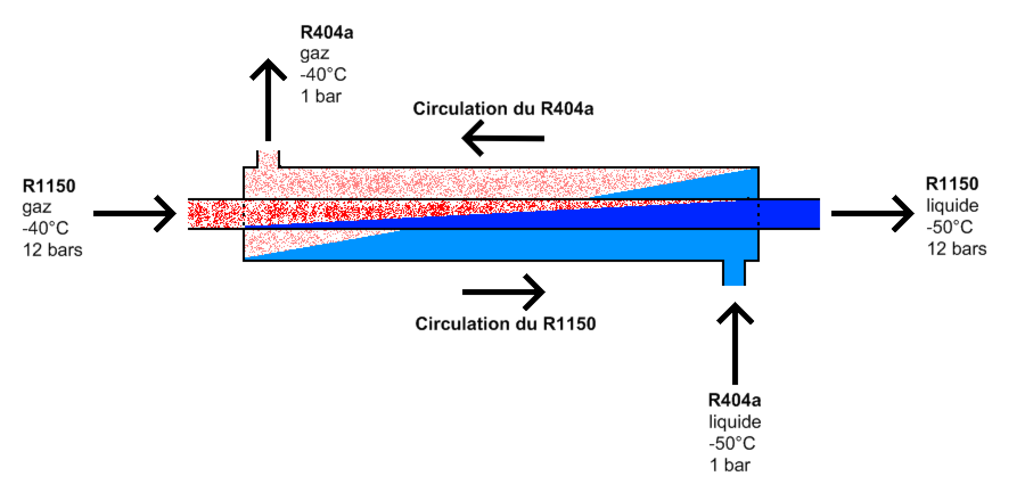Heat exchanger working principle: Unravel the mysteries behind these silent superheroes that maintain your home’s comfort all year long. Join us as we delve into their operating principles, explore various types, and develop a deeper understanding of these often-overlooked champions of thermal management!

Table of Contents
Heat Exchanger Working Principle
Heat exchangers work like a traffic cop for heat, guiding it from one place to another. They transfer heat between two fluids without mixing them, keeping everything neat and tidy. Picture a dance where partners swap without ever touching— that’s heat exchangers for you.
Types of Heat Exchangers
There are several types of heat exchangers, each with its own unique flair. Let’s check out three common ones: shell and tube, plate, and finned tube heat exchangers.
Shell and Tube Heat Exchangers
Imagine a bunch of pipes within a bigger pipe— that’s a shell and tube heat exchanger. Hot fluid runs through the smaller tubes while cold fluid flows around them inside the shell. It’s a classic design, efficient and robust, like an old-timey locomotive.
Plate Heat Exchangers
Plate heat exchangers are like a stack of waffles, with hot and cold fluids flowing through alternating layers. They’re compact and efficient, making them perfect for tight spaces. Who wouldn’t want a waffle-inspired heat exchanger at home, right?
Finned Tube Heat Exchangers
Finned tube heat exchangers are like a porcupine with tubes instead of quills. They have fins on the outside to increase surface area and enhance heat transfer. These spiky wonders are great for when you need extra heat transfer oomph!
Heat Transfer Mechanisms (Heat Exchanger Working Principle)
Now that we know about the types, let’s talk about how heat exchangers actually transfer heat. There are three main mechanisms: conduction, convection, and radiation.
Conduction
Picture conduction as a high-stakes game of hot potato, where heat zips through a solid material from molecule to molecule. It’s the MVP of heat exchangers, enabling heat to glide through the walls of tubes or plates with ease.
Convection
Convection is the heat transfer maestro that orchestrates the movement of fluids (be they liquids or gases) due to temperature disparities. Within heat exchangers, this phenomenon transpires when a chillier fluid dances over a toastier solid surface, soaking up heat and whisking it away. This fluid ballet and heat exchange are vital for the top-notch performance of numerous heat exchangers.
Radiation
Radiation is like an enigmatic heat wave, shuttling heat through the vast emptiness of space. Though it’s the least significant mechanism in heat exchangers, it’s still worth a nod. Just envision the sun’s warmth on a balmy summer day—that’s radiation working its magic!
Common Problems with Heat Exchangers
Even superheroes have their kryptonite, and heat exchangers are no exception. Three common issues they face are fouling, corrosion, and thermal stress.
Fouling
Fouling is like a pesky gum stuck to your shoe, as dirt and deposits build up on heat exchanger surfaces. This gunk reduces efficiency and can lead to overheating. Regular maintenance can help keep fouling at bay and your heat exchanger running smoothly.
Corrosion
Corrosion is like rust on a bike, slowly eating away at metal surfaces. It can weaken heat exchanger components and cause leaks. Choosing the right materials and proper maintenance can help prevent corrosion and keep your heat exchanger in tip-top shape.
Thermal Stress
Thermal stress is the result of frequent temperature changes, causing materials to expand and contract. It’s like an overworked rubber band, eventually snapping under pressure. Heat exchanger designs that accommodate these stresses can help minimize this issue.
Now that you have an understand of the heat exchanger working principle, you can appreciate the hard work heat exchangers do behind the scenes to keep your home cozy. Don’t forget to give them a little TLC with regular maintenance, and they’ll keep on being the silent superheroes of your home!